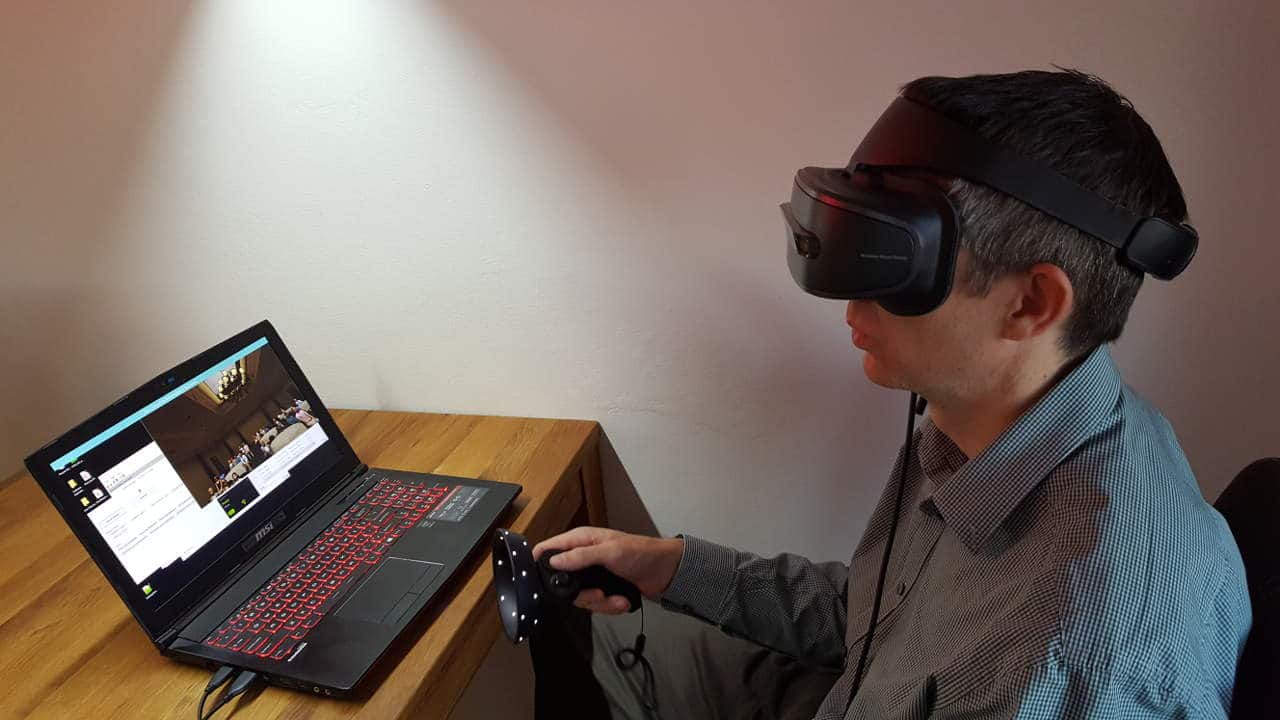Your cart is currently empty!
Virtual Orator now supports another HMD, the newly released Windows Mixed Reality headsets! These headsets make Virtual Orator more portable than ever. A great fit for trainers who spend a lot of time visiting clients.
Windows Mixed Reality headsets are based on a design by Microsoft, but produced by different companies with slightly specs and aesthetics. No matter your choice Virtual Orator will work with it.
Whats the deal?
There are three aspects of the Windows Mixed Reality HMDs that are unique right now. The biggest is the tracking method. It includes positional tracking, which we require for Virtual Orator because it is such an important factor in simulator sickness. Unlike the other devices on the market, it uses cameras built into the front of the HMD to do the tracking. Our experience so far, is it isn’t perfect, but generally does well enough.
Why is this cool? Well it means there is no external camera(s) to setup. The whole system is highly portable. The model we have becomes very compact. Part of that is the ‘flip’ up display.
The flip up display is quite unique. For the occasional use to look at a keyboard or get your bearings in the real world it might be OK. The unfortunate part of it, is it means the headset doesn’t blend out the real world was well.
Finally, these devices require slightly less technical capabilities. The biggest part is that it will work on ‘mobile’ graphics cards, i.e. the traditional design of laptops. Finally you can have a laptop that runs VR without feeling like the old days of ‘portables’. In the image above it is running on a laptop with a Nvidia GTX 970m, though at much lower graphics settings.
Windows 10 and the new Fall Creators Update are required. Check your PC’s compatibility with this.
How to Run Virtual Orator
Virtual Orator works with the Mixed Reality headsets via SteamVR. Currently this is a special version of SteamVR that was created by Steam and Microsoft. Here’s the steps.
- Install Windows 10 Fall Creators Edition.
- Connect your headset and make sure it works.
- Install Steam and the Windows Mixed Reality for SteamVR app.
- Launch the special version of SteamVR and make sure it works.
- Launch Virtual Orator and start your session. That’s it.
- You may want to adjust the input mapping for the devices; they can be changed on the System page, click the “Input Mapper for VR” button.
Dr. Blom is a long time researcher in the VR field. He is the founder of Virtual Human Technologies, which applies VR and avatar technologies to human problems and helping better understand people. Virtual Orator exists largely because Dr. Blom wishes he had had such a tool instead of the ‘trail by fire’ he went through learning to speak in public.



Leave a Reply